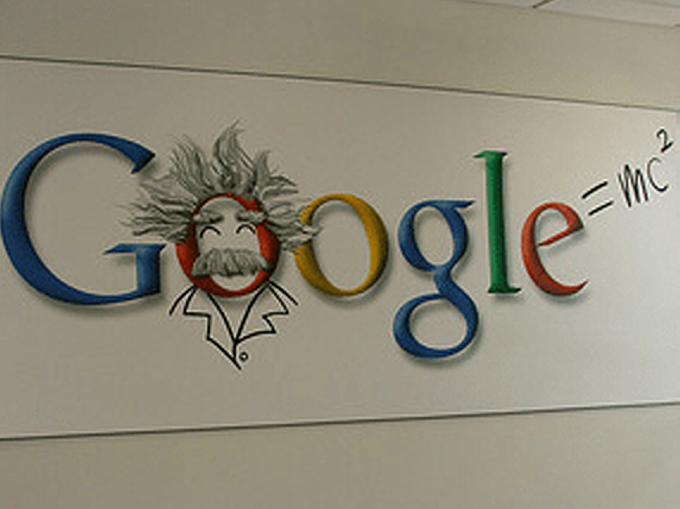In my 8-part “website positioning 101” collection, I addressed the fundamentals of using content material on an internet site for search engines like google and yahoo, together with key phrase analysis and optimization. With this text, I’ll begin a brand new “website positioning 201” collection that explains technical, backend facets of web site structure and group.
Typical search entrepreneurs’ ability units run deep in advertising and marketing and shallow within the technical and growth areas. That’s why the architectural facet of search engine marketing so usually ambushes ecommerce entrepreneurs. It’s thus far outdoors the everyday advertising and marketing ability set that many don’t even see it coming.
Consider it this manner: Search engines like google and yahoo are only a completely different sort of influencer.
We all know that the opinions of influencers have an effect on the acquisition choices of a community of shoppers. This may very well be as small as a CEO’s alternative of tablets influencing the executives he manages, to Shopper Experiences influencing the acquisition choices of its greater than seven million readers. These are examples of human influences affecting the acquisition choices of different people.
Google can also be an influencer. Google consumes a web site’s content material and algorithmically determines if it’s worthy of displaying to the shoppers it influences. Many searchers incorrectly interpret excessive rankings as Google’s suggestions on the “finest” content material and merchandise, moderately than because the pages most algorithmically authoritative and related to the searcher’s question.
Google can also be an influencer. Google consumes a web site’s content material and algorithmically determines if it’s worthy of displaying to the shoppers it influences.
The notion that Google recommends one web site over one other creates affect, and to a a lot bigger extent than another influencer. Google answered round 12 billion U.S. search queries in June, in accordance with comScore’s “U.S. Search Engine Rankings” report. The opposite search engines like google and yahoo contributed one other 5 and a half billion searches mixed.
Along with affect, search engines like google and yahoo supply a direct path to buy. It’s just like the executives who covet their CEO’s pill having the ability to click on a button within the convention room to purchase the pill immediately.
What different influencer has this sort of energy, to affect and allow direct buy?
Technical website positioning to Attain the Influencers
Sadly, the last word influencer additionally works by a set of poorly understood guidelines. Many of those guidelines are technical or architectural in nature, and breaking these guidelines may end up in full lack of visibility in search engines like google and yahoo.
Content material optimization is less complicated to know as a result of it entails phrases. Searchers sort phrases into the search field, and websites that use these phrases optimally have a greater probability of rating nicely. For a refresher on key phrase analysis and content material optimization, check out my “website positioning 101″ collection.
Technical website positioning is predicated not on phrases, however on guidelines. Search engines like google and yahoo are simply complicated items of software program that feed information from the net into large server farms for processing in accordance with algorithms that match every net web page’s relevance and authority to searchers’ queries. As a result of the items that have an effect on website positioning are software-based, they essentially observe guidelines that the builders have written.
When you perceive the principles — how alerts search engines like google and yahoo interpret alerts and what they’ll’t interpret — you’ll be able to piece collectively many technical website positioning points.
3 Guidelines of Technical website positioning
- Rule 1. If you need your web site or part of your web site to drive natural search visits and gross sales, the content material should be crawlable and indexable.
Search engines like google and yahoo exist to return outcomes that the majority intently match queries entered by searchers. To do that, a search engine first has to find net content material with a chunk of software program known as a crawler or bot, and index or save the content material in its server farm. If the crawler can’t uncover the content material or is unable to index the content material it finds, the content material can’t be processed algorithmically and can’t be ranked for searchers to devour.
Put merely: No crawl means no indexation, no rankings, and no prospects.
The excellent news is that figuring out whether or not a web site has damaged this rule is often pretty clear in that pages are both listed or they don’t seem to be.
- Rule 2. Don’t belief what you’ll be able to see as being crawlable.
You take a look at your own home web page and see a wonderland of content material and hyperlinks. You suppose to your self, “What a feast of content material for the various search engines to crawl and index.” However when the crawler visits your own home web page, the one content material it could possibly index is your easy footer hyperlinks. What occurred?
The content material we see on an online web page – photographs, video, textual content – could be coded in lots of, many various methods on many, many various platforms. These platform and growth selections can restrict what the bots can crawl and index. And as mentioned in Rule 1, if it could possibly’t be crawled or listed, it could possibly’t be ranked and drive prospects by way of natural search.
Figuring out whether or not your web site has damaged this rule is pretty easy, however fixing the problems is often way more concerned.
- Rule 3. Optimum structure permits or disables optimum crawling, although it’s equally crucial to all three areas of website positioning – technical, content material and authority.
The positioning’s structure refers back to the mapping of pages and the interlinking between these pages. Structure is a technical website positioning ingredient as a result of it impacts crawling. The HTML hyperlinks in header and footer navigation, the hyperlinks in cross-selling parts, and different inside linking parts – every of those can allow or disable crawlers to entry content material.
Optimum structure is included as Rule 3 as a result of it has a gating impact on website positioning in addition to affect on all different facets of website positioning. Any issue that impacts the primary fundamental want of website positioning – the crawl – is before everything a technical website positioning concern.
Structure additionally determines the key phrase segments for which a web site shall be related. Whether or not a web page exists or doesn’t exist, and the way deeply within the web site’s hierarchy it’s positioned, has far-reaching penalties for website positioning.
Structure additionally crosses into content material optimization as a result of optimizing web page templates for natural search entails technical facets corresponding to how they’re coded and content material facets corresponding to how a lot and which forms of content material shall be seen on the web page. Authority is affected as a result of the identical HTML hyperlinks that the crawler must index content material additionally function conduits to move hyperlink authority deeper into the positioning.
Addressing the three Guidelines
The following a number of articles in “website positioning 201” shall be devoted to diagnosing and resolving the problems that come up from breaking these three guidelines.
Naturally, in a area as complicated as website positioning, there are various examples and edge circumstances that may be examined in opposition to these three guidelines. The entire points I’ve encountered could be boiled down to those three root causes. You probably have different technical website positioning guidelines to posit, please publish them within the feedback. I’d love to listen to your ideas.
For the subsequent installment of our “website positioning 201” collection, see “Half 2: Crawling and Indexing Limitations.”


